| Name |
Raynaud’s syndrome (raynauds) |
| Category |
Cardiovascular |
| Sex |
|
| Adult |
Yes |
| UUID |
529ed786-6bfb-4a91-906d-7fce08d18e91 |
| Definition |
Raynaud’s phenomenon is a relatively common but often unrecognized clinical syndrome causing characteristic color changes in the digits as a result of vasospasm. This may occur after exposure to a cold environment, emotional stress, or from other physical or medication exposures. |
Ontologies
Key Summary Statistics
Cases from any source
| Total |
6188 |
| Female (%) |
4270 (69%) |
| Male (%) |
1918 (31%) |
Year first recorded
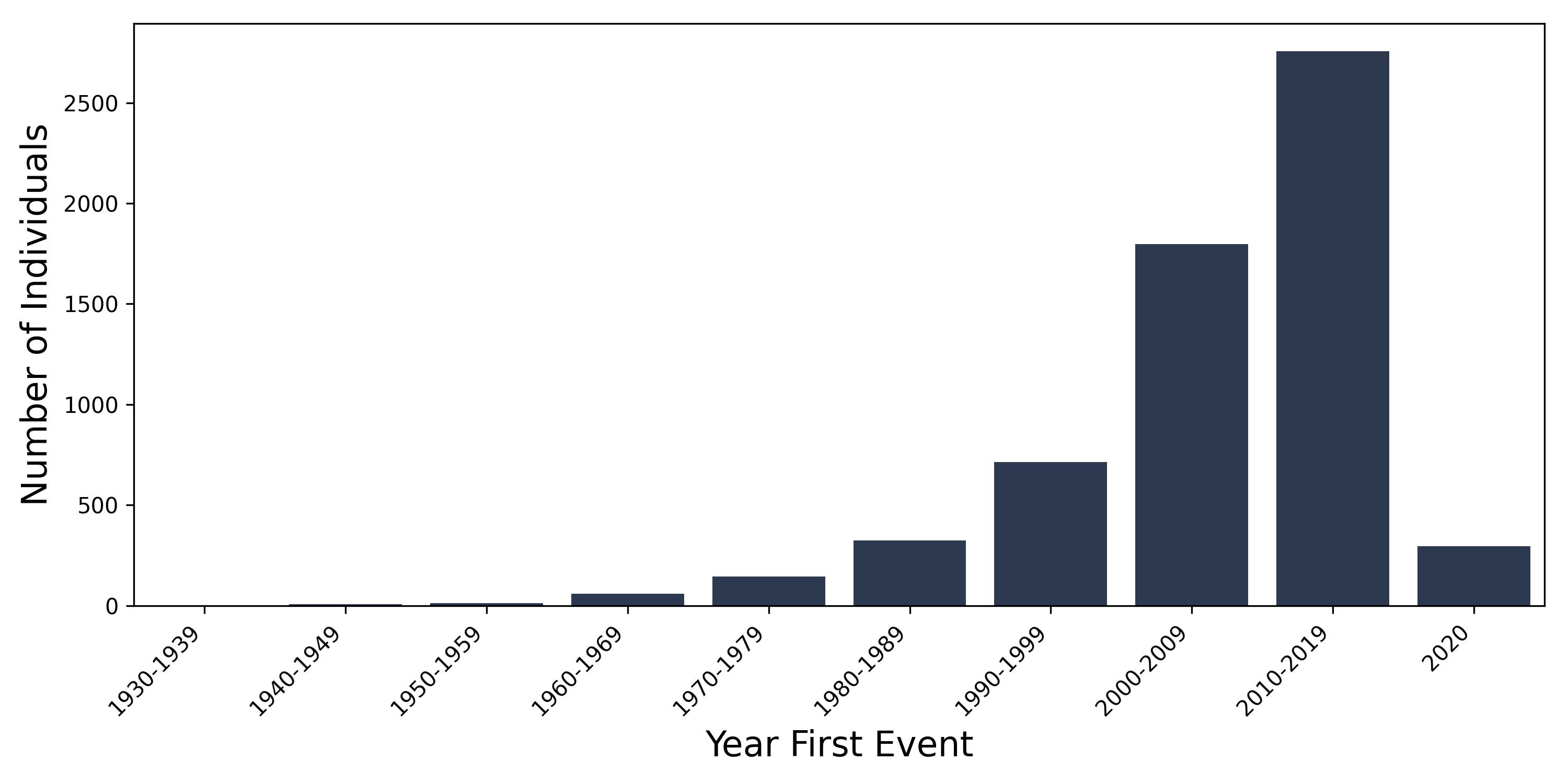
Cases linked in all UK Biobank sources
Cross-source concordance
Vertical bars correspond to number of cases per source/intersection; horizontal bars to left correspond to total number of cases per source.
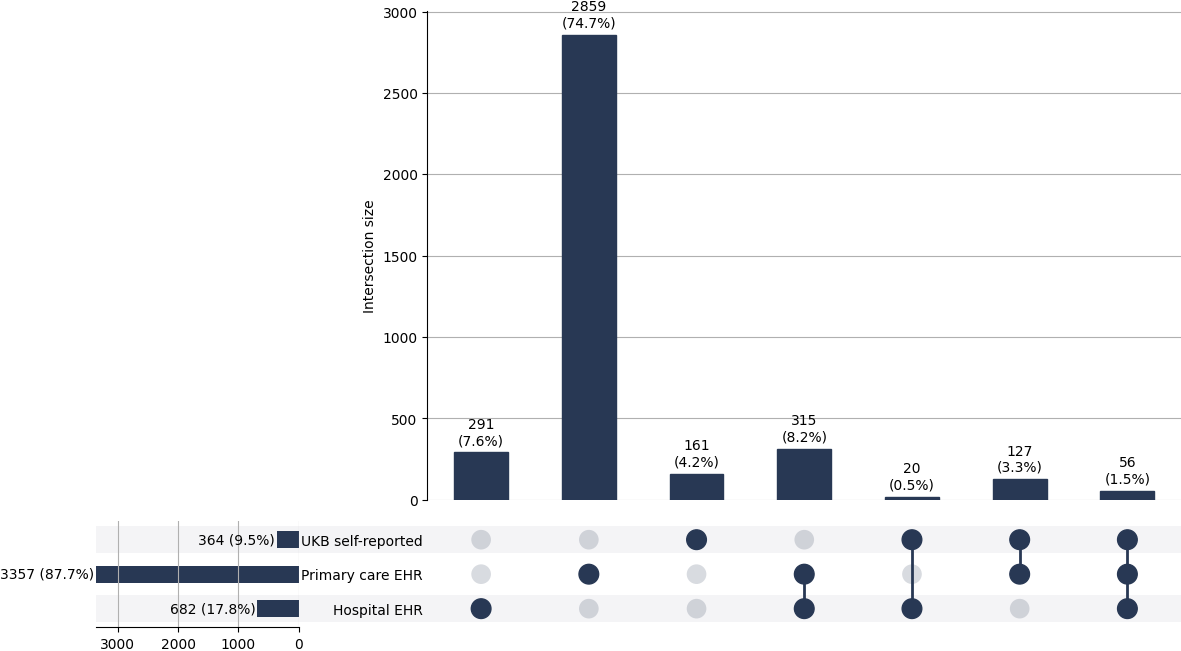
Incidence & prevalence
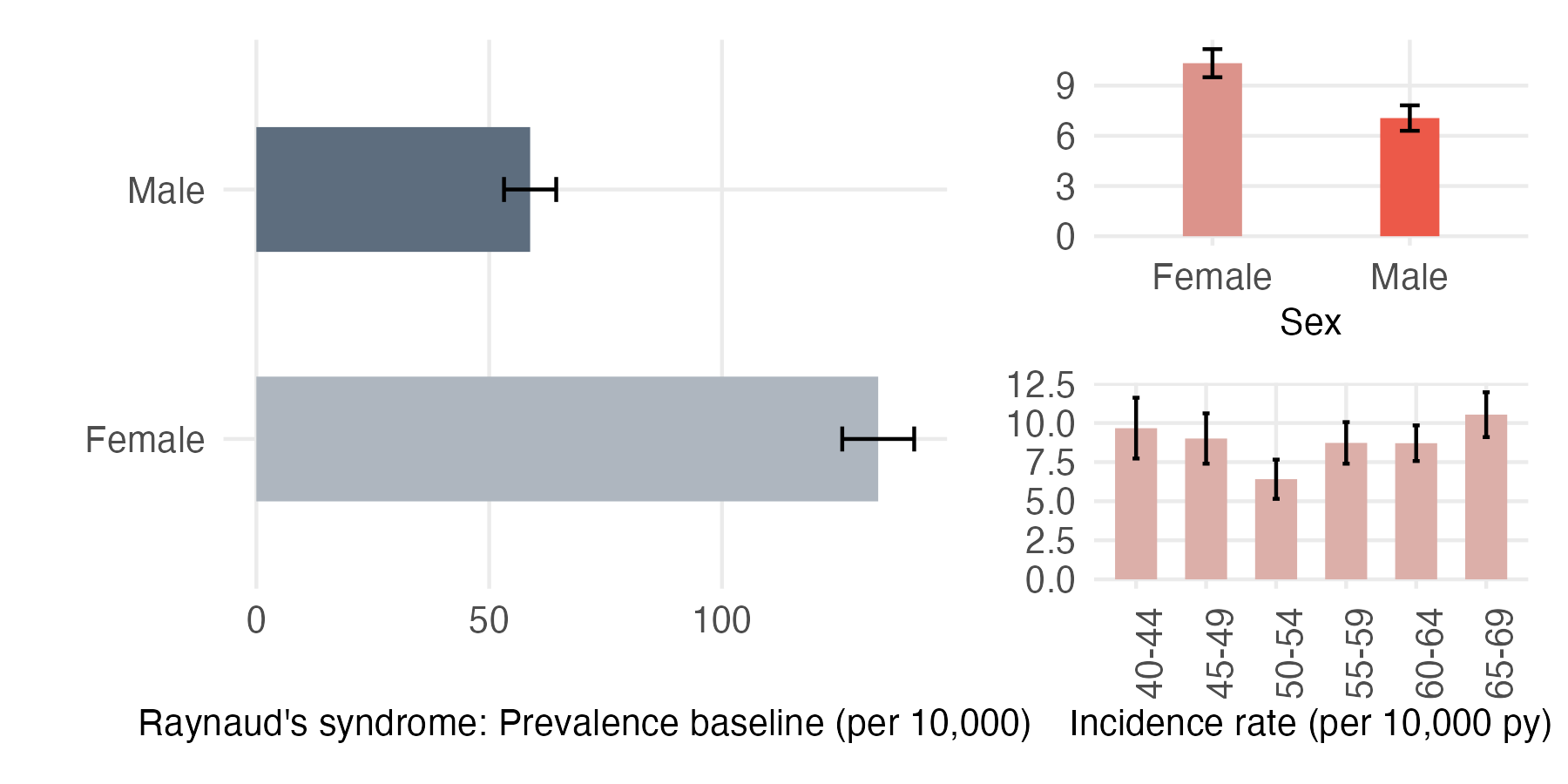
Baseline prevalence stratified by sex
| Female |
133.55 (125.83,141.28) |
| Male |
58.8 (53.19,64.4) |
Incidence stratified by sex
| Female |
10.34 (9.5,11.18) |
| Male |
7.06 (6.3,7.82) |
Incidence stratified by age
| Ages 40-44 |
9.67 (7.73,11.62) |
| Ages 45-49 |
9.01 (7.4,10.62) |
| Ages 50-54 |
6.41 (5.15,7.66) |
| Ages 55-59 |
8.73 (7.4,10.06) |
| Ages 60-64 |
8.71 (7.57,9.85) |
| Ages 65-69 |
10.54 (9.1,11.97) |
Period prevalence
Methods
Comparison with general population
Sex-standardised prevalence from CALIBER study (Kuan et al. 2019)
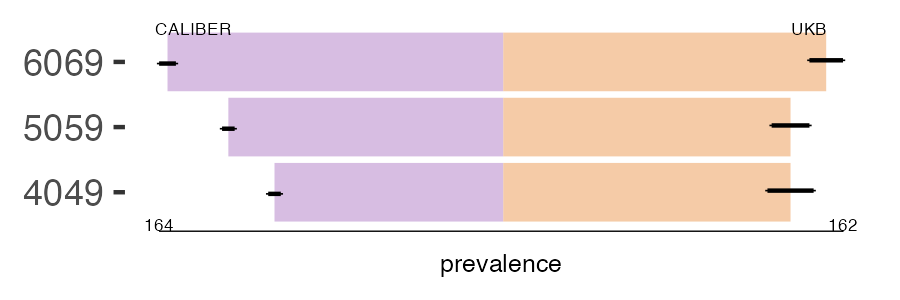
| Population |
Ages 40-49 |
Ages 50-59 |
Ages 60-69 |
| UK Biobank |
137 (126,148) |
137 (128,146) |
154 (146,162) |
| CALIBER |
109 (106,112) |
131 (128,134) |
160 (156,164) |
Stratified by age and Townsend deprivation status
| Deprivation status |
Ages 40-49 |
Ages 50-59 |
Ages 60-69 |
| Least deprived |
157(130,188) |
136(118,158) |
152(135,170) |
| Low |
135(110,165) |
139(119,160) |
145(129,163) |
| Medium |
147(122,176) |
139(120,160) |
152(135,171) |
| High |
137(115,163) |
130(111,150) |
159(141,178) |
| Most deprived |
116(96,138) |
138(119,159) |
164(145,185) |
Stratified by age and country
| Country |
Ages 40-49 |
Ages 50-59 |
Ages 60-69 |
| England |
148(135,161) |
144(134,155) |
159(150,169) |
| Scotland |
75(54,101) |
80(63,101) |
124(104,146) |
| Wales |
122(87,167) |
157(125,194) |
146(119,177) |
Risk factors analysis
‘Healthy’ BMI, smoking status ‘never’, or no hypertension (absence of hypertension records) were considered as reference values.
Hazard Ratio (HR) values with P < 0.0002 were considered to show significant association with disease onset after correction for multiple-testing using the Bonferroni method
N=147230, Events=709
| Factor |
Level |
Hazard Ratio |
P value |
| BMI |
overweight |
1.31 (1.08, 1.58) |
0.00511 |
| BMI |
obese |
1.42 (1.15, 1.75) |
0.0011 |
| BMI |
underweight |
0 (0, Inf) |
0.982 |
| smoking |
previous |
1.11 (0.94, 1.32) |
0.217 |
| smoking |
current |
2.52 (2.07, 3.07) |
3.95e-20 |
| hypertension |
yes |
1.42 (1.21, 1.67) |
1.57e-05 |
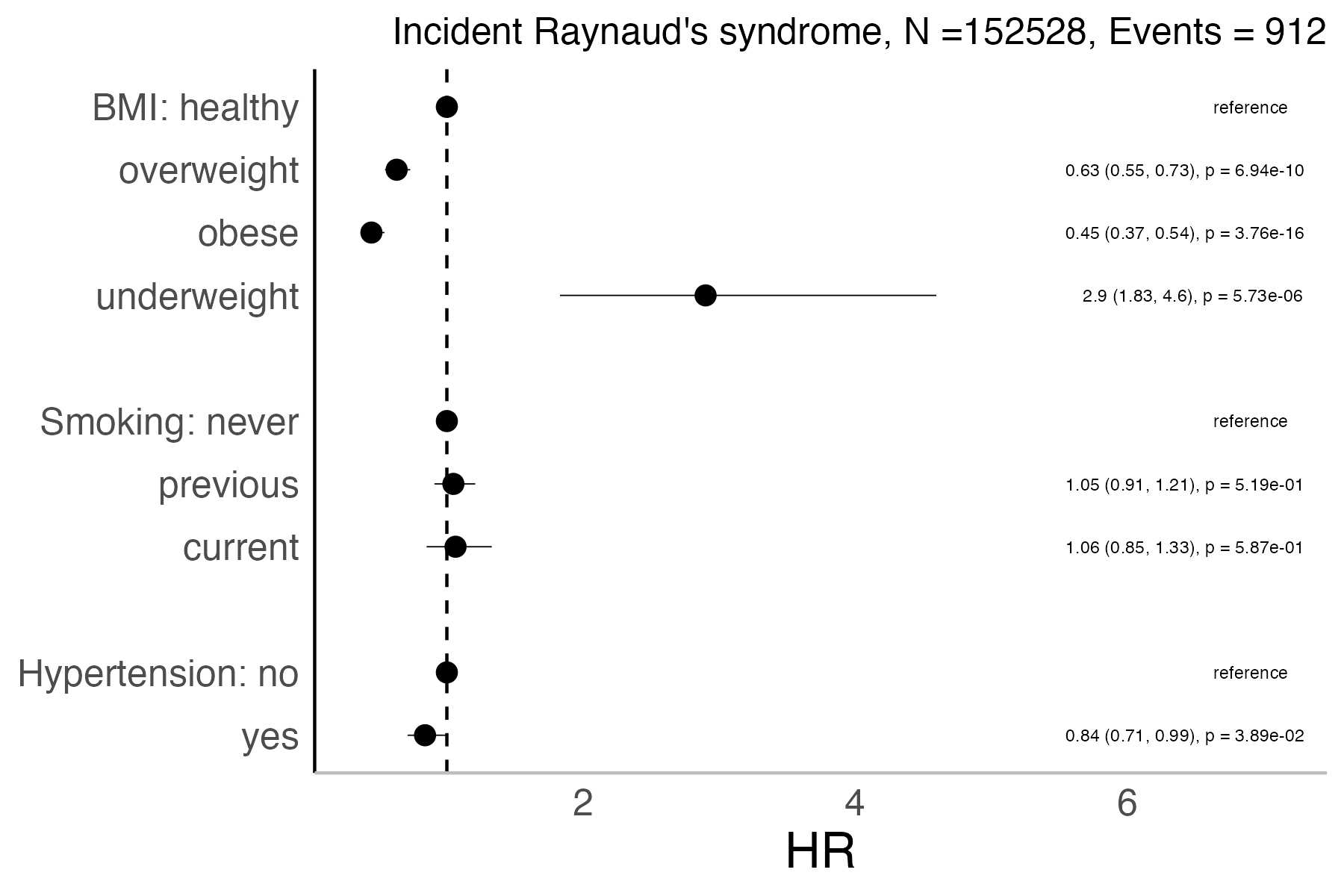
Definition
| UK Biobank field id |
Description |
Code |
Value |
| 20002 |
Non-cancer illness code, self-reported |
1561 |
raynaud’s phenomenon/disease |
| 41202 |
Diagnoses - main ICD10 |
I73.0 |
Raynaud’s syndrome |
| 41204 |
Diagnoses - secondary ICD10 |
I73.0 |
Raynaud’s syndrome |
| 40001 |
Underlying (primary) cause of death: ICD10 |
I73.0 |
Raynaud’s syndrome |
| 40002 |
Contributory (secondary) causes of death: ICD10 |
I73.0 |
Raynaud’s syndrome |
| 42040 |
GP clinical event records |
G730000 |
Raynaud’s disease |
| 42040 |
GP clinical event records |
G730100 |
Raynaud’s phenomenon |
| 42040 |
GP clinical event records |
G730111 |
Vibratory white finger |
| 42040 |
GP clinical event records |
G730.00 |
Raynaud’s syndrome |
| 42040 |
GP clinical event records |
G730z00 |
Raynaud’s syndrome NOS |
| 42040 |
GP clinical event records |
XE0VQ |
Raynaud’s phenomenon |




